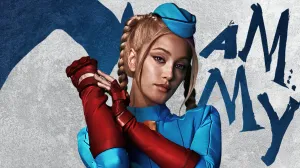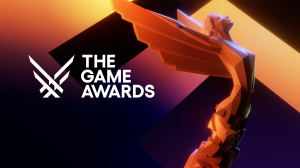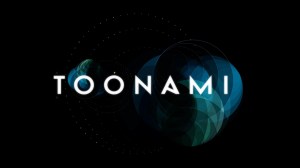Square Enix’s surprised even longtime fans of the action RPG series developed by tri-Ace games. That’s because the series seemed to have peaked early with Star Ocean: The Second Story‘s release on the PlayStation in 1998. The sequel to that game contained one of the most polarizing twist-endings in the history of the JRPG genre, dividing the series’ fanbase, and subsequent games have failed to make much of an impact. The Divine Force then offers an opportunity to right the starship, charting a new course Star Ocean can follow into the future (if it makes enough money to keep tri-Ace afloat). However, while The Divine Force is an enjoyable action-RPG adventure that fans of the genre will likely welcome, it is too stuck in the past to feel like the harbinger of a better future that some fans may have hoped it would be.
Videos by ComicBook.com
Tri-Ace has been open about how much classic sci-fi IPs outside of video games, especially Star Trek, influenced Star Ocean’s creation, and The Divine Force‘s premise wears that influence on its sleeve. The game begins when a military starship from the Pangalactic Federation surprise attacks the merchant vessel belonging to Capt. Raymond Lawrence. Ray escapes to a nearby “underdeveloped” planet where he meets Laeticia Aucerius, the princess of one of the planet’s major kingdoms. Ray and Laeticia reach an agreement whereby Laeticia and her retainer, Albaird, will assist Ray in finding the other surviving members of his crew. For his part, Ray will help them find a wise man that’s gone into hiding, an agreement that leads to a much grander adventure.
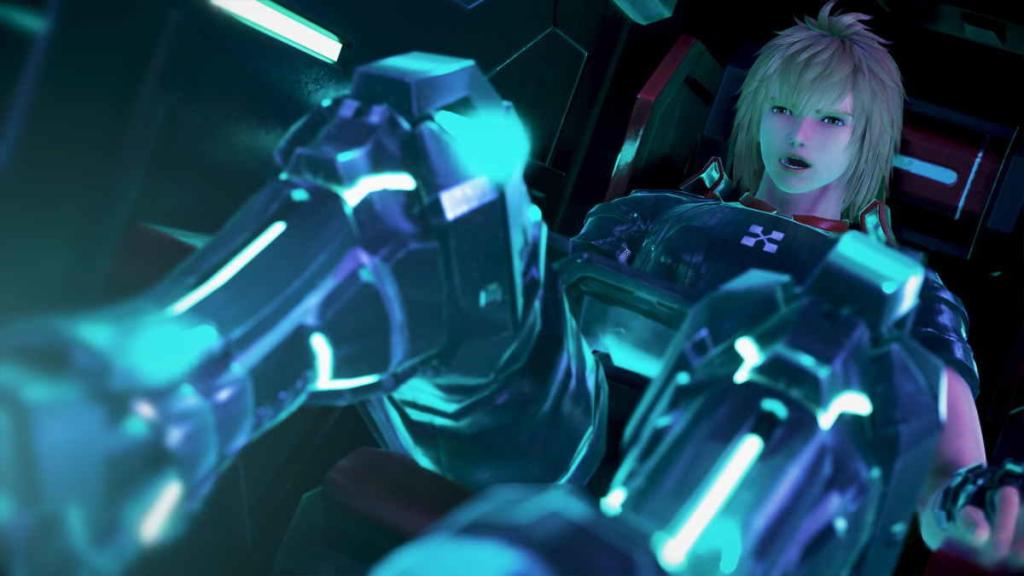
For anyone familiar with Star Trek’s tropes, playing through The Divine Force will often feel like playing through a lost anime series set in the Star Trek universe. (For what it’s worth if Alex Kurtzman happens to be reading this review, Star Trek: The Anime doesn’t sound like a terrible idea). Despite having no affiliation with or love for the Federation, Ray fits the mold of a “Capt. Kirk type,” and his first officer, the android Elena, could be considered a “Spock type.” The story at first seems to be about Ray and his crew’s presence violating the Federation’s Planet Preservation Pact, identical to Star Trek’s Prime Directive, which forbids spacefarers from meddling with pre-warp planets. However, this theme fades into the background surprisingly quickly as Laeticia and the other natives of the “underdeveloped” world take every new revelation about interstellar society in stride. The game also muddles the precise state of their technology, having them be baffled by simple firearms only after a boss battle against a group of powerful automatons with energy cannons built by someone planetside.
While the story is heavy on the tropes, it’s still enjoyable for most of the game, at least what I got to see of it. Players start by choosing between Ray and Laeticia. That character becomes their exclusive point of view through which they’ll experience the story. The two meet up early and spend most of the story together, except for certain portions of the game where they separate. Then, players only get to see what happened to their chosen character firsthand, leaving the other half of the story to be conveyed through secondhand accounts, if that. The idea here is to incentivize players to play the game at least twice, a bold presumption on tri-Ace’s part, but in effect, it felt more like being cheated out of parts of a story after becoming invested in it.
Playing through the story involves exploring vast outdoor environments, cities, and deep dungeons and breaking into real-time combat in those same locations whenever a hostile is detected. The Divine Force excels in the design of these environments. The outdoor zones are vast, inspiring awe with their forests, fields, and snow-capped mountains, usually dotted with strange energy shooting into the sky. The cities and towns feel lived in and built to match their environment, be that a tiered mining town growing out of the side of a mountain or a cobbled port town that curves with the bend of the coastline.
D.U.M.A., a strange alien orb, enhances combat and exploration. D.U.M.A. can attach to a character, allowing them to rocket into the sky, over chasms, and whatnot, making exploration fun and interesting. It feels a little clumsy at first due to the angle of the ascent being limited. (I experienced many instances of trying to aim for a high spot, not being able to angle high enough, and having the reposition my character for a better vantage. I should have paid more attention in trigonometry class.) However, once players get comfortable, it’ll make searching these vast open areas for hidden treasures and the material needed to upgrade D.U.M.A. all the more enjoyable.
In combat, players use D.U.M.A. for charging attacks at enemies. Players can also change direction mid-charge, and if they catch an enemy off-guard, it will initiate a “blindside,” stunning the enemy and increasing damage to it. It feels like a faster, more kinetic version of playing a Vanguard in the Mass Effect games.
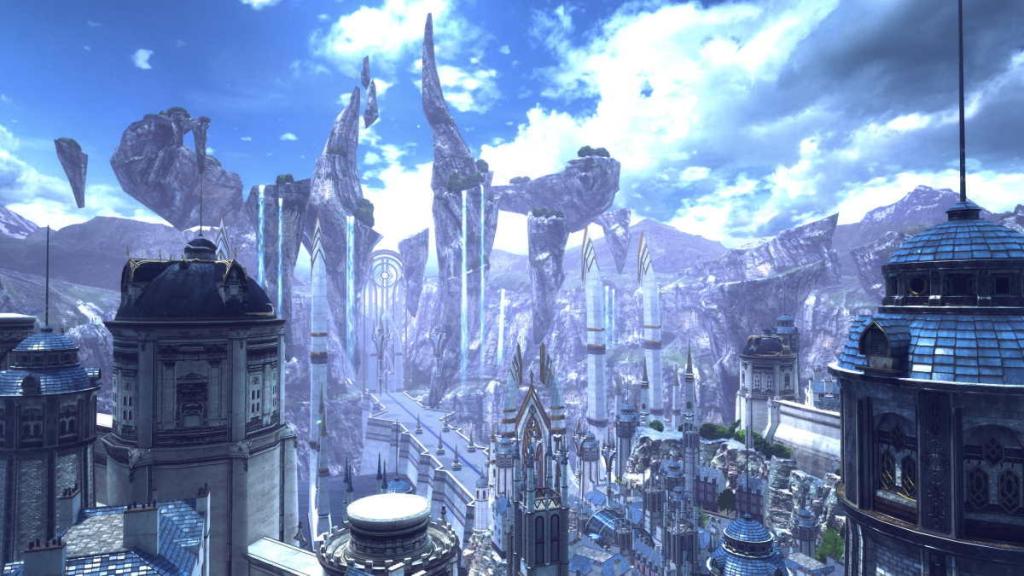
Outside of that, combat is action-oriented. Players have combat skills that they can set up in chain combos based on which button they push. Each action requires spending AP that recharges over time. There’s no basic attack, so once you run out, your character can’t attack. It’s a clever way to limit button mashing, but running around waiting for AP to recharge doesn’t feel great.
Ray/Laeticia isn’t alone in combat. Three other characters fight alongside them, and players can freely swap which one they control, leaving the other three to AI control. The game’s combat is fast-paced and fun. However, the lack of AI behavioral controls is frustrating, offering only three party-wide options amounting to “fight the same enemy,” “fight different enemies,” and “do what you want.” This sparse system is less of an issue during the average fight, where (on the game’s medium difficulty) enemies fall pretty quickly. It’s more of a problem during boss battles, which are often challenging in that “Hey, you need to learn how to play this game properly now” way.
The lack of AI customization is part of the bigger, overarching problem that holds The Divine Force back. Many of the game’s systems are underdeveloped or feel like they’re from a previous generation. One example is The Divine Force‘s use of Private Actions, a staple system of the Star Ocean series. Private Actions are conversations or events between the main character and one of the secondary characters that can increase the characters’ friendship, lead to romance, and affect how the game ends. These events occur in towns when the party disbands, with the player seeking out the other characters to initiate.
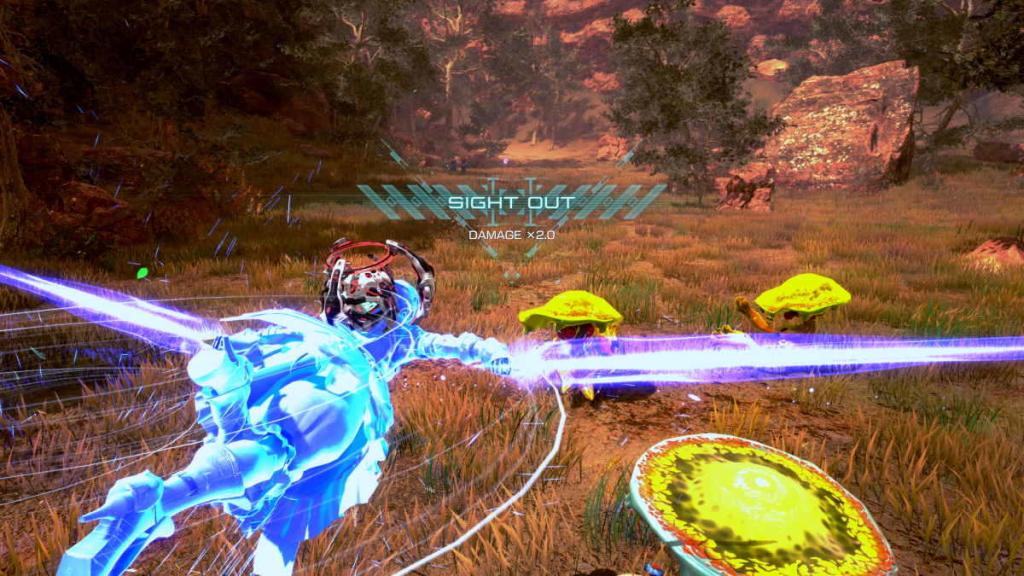
However, while The Divine Force‘s maps will tell you where your characters are, there’s no indication of which ones are ready for a Private Action, a pretty simple design choice that modern JRPG players would take for granted. At first, it doesn’t seem that bad. Yet, when the party eventually grows to 6-8 characters, it becomes tedious to travel from one side of a city to the other to track them all down to be rewarded with nothing more than the kind of stock dialogue one might expect from a nameless NPC.
The word “tedious” also applies to the game’s leveling system. Characters each have a skill tree that allows for plenty of customization, but using it is far from engaging. Most skills are statistical upgrades that are too abstract to feel meaningful. There are also passive skills, but almost all of them are shared between every character, making them feel generic and the characters less distinct. The only skills that feel meaningful are the ones activated during combat, and it’s hard to see why the skill trees shouldn’t have been streamlined to those alone, letting linear progression handle the stat buffs.
The list of tedium doesn’t stop there. Side quests are pretty exclusively of the fetching variety, offering little excitement. There’s a minigame where you can challenge NPCs in towns, but it’s surprisingly hard to find opponents since you can only play against ones in your specific skill range. There’s a crafting system that’s robust in what it can produce but barebones in execution, requiring little more than selecting items from a menu list. That wouldn’t be too bad, but skills can be leveled through repetition, encouraging players to grind. The game also frequently briefly removes characters from the party for story reasons. Whenever this happens, it unequips their accessories, creating an unnecessary hassle.
Despite these flaws, The Divine Force is fun to play for most of the 40-ish hour main plot, though I did find the last quarter or so of the game less engaging. Without spoiling much of anything, the last portion of the game spends a lot more time delving into indoor dungeons packed full of last-minute gimmicks that are more irritating than fun. The game breaks up the dungeon crawls with lengthy cutscenes that either reveal the latest in nesting doll-like series of “masterminds behind the curtain” or unsuccessfully attempt to explain a particular faction’s dense philosophy of being before the player dozes off.

That may sound harsh, but by the time players reach this sluggish final act, they’ll likely be invested enough in the likable characters, brought to life with English voice acting much stronger than the trailer might have led players to believe, to keep going. There’s not much real depth to the narrative, even though the game seems like it wants to be about big ideas. There are overtones about factionalism, but the game does little to explain why these divisions exist beyond leaning on melodrama, reducing them to white hats and black hats. However, it packs enough “hell yeah,” fist-pumping cinematic moments to draw players in, compelling them to keep playing and see the story through to its end.
Star Ocean: The Divine Force isn’t a bad game. However, it is a game that feels stuck in the past, out of step with the current JRPG renaissance. It fails to adopt the quality of life improvements pioneered in the past generation games, relying too heavily on past precedents, whether or not those precedents ever worked well. Those looking for classic JRPG comfort food will appreciate what The Divine Force has to offer: fast combat, a familiar story, and characters they’ll want to get to know. That’ll go doubly for those who cut their teeth on PlayStation 2-era JRPG titles, for whom the tedium baked into the game might seem less glaring. Star Ocean: The Divine Force isn’t the fully-realized rebirth of the series that it perhaps could have been, but it is at least proof that there is something here worth saving and that tri-Ace deserves to be around long enough for another shot at it.
Rating: 3 out of 5
Star Ocean: The Divine Force is on sale now for PlayStation 4, PlayStation 5, Xbox One, Xbox Series X, and Windows PC. It was reviewed on a PlayStation 5 with a review code provided by the publisher.



